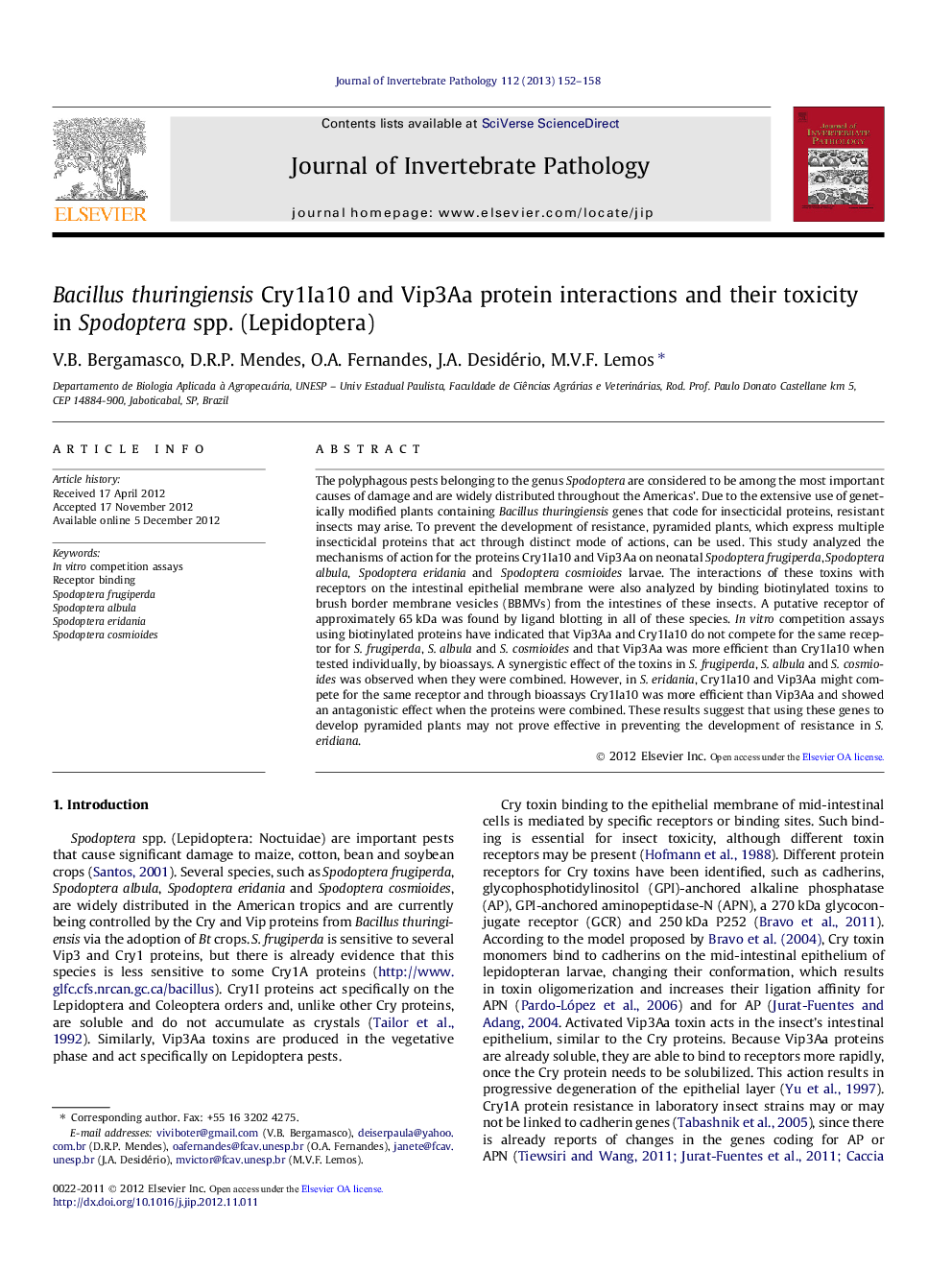| Article ID | Journal | Published Year | Pages | File Type |
|---|---|---|---|---|
| 6389637 | Journal of Invertebrate Pathology | 2013 | 7 Pages |
The polyphagous pests belonging to the genus Spodoptera are considered to be among the most important causes of damage and are widely distributed throughout the Americas'. Due to the extensive use of genetically modified plants containing Bacillus thuringiensis genes that code for insecticidal proteins, resistant insects may arise. To prevent the development of resistance, pyramided plants, which express multiple insecticidal proteins that act through distinct mode of actions, can be used. This study analyzed the mechanisms of action for the proteins Cry1Ia10 and Vip3Aa on neonatal Spodoptera frugiperda, Spodoptera albula, Spodoptera eridania and Spodoptera cosmioides larvae. The interactions of these toxins with receptors on the intestinal epithelial membrane were also analyzed by binding biotinylated toxins to brush border membrane vesicles (BBMVs) from the intestines of these insects. A putative receptor of approximately 65Â kDa was found by ligand blotting in all of these species. In vitro competition assays using biotinylated proteins have indicated that Vip3Aa and Cry1Ia10 do not compete for the same receptor for S. frugiperda, S. albula and S. cosmioides and that Vip3Aa was more efficient than Cry1Ia10 when tested individually, by bioassays. A synergistic effect of the toxins in S. frugiperda, S. albula and S. cosmioides was observed when they were combined. However, in S. eridania, Cry1Ia10 and Vip3Aa might compete for the same receptor and through bioassays Cry1Ia10 was more efficient than Vip3Aa and showed an antagonistic effect when the proteins were combined. These results suggest that using these genes to develop pyramided plants may not prove effective in preventing the development of resistance in S. eridiana.
Graphical abstractDownload full-size imageHighlights⺠Expression and purification of Cry1Ia10 and Vip3Aa in Escherichia coli BL21(DE3). ⺠Detection of a putative 65 kDa membrane receptor by ligand blotting. ⺠In vitro competition analysis using BBMVs in four Spodoptera species. ⺠High toxicity and synergism in Spodoptera frugiperda, Spodoptera albula and Spodoptera cosmioides. ⺠High toxicity and antagonism in Spodoptera eridania.
